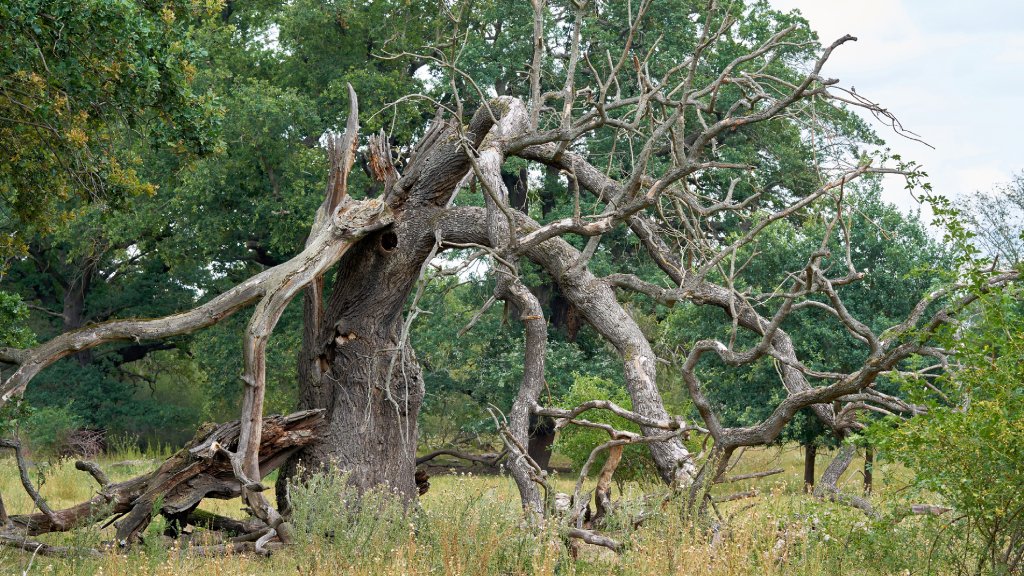Snag Trees: What Are They & Why Are They Good For Wildlife?
The term snag tree may not seem appealing, but for insects, birds and other wildlife, a tree snag can provide the perfect haven.


Some of us may be familiar with a snag in a garment or a snagged fingernail. But what is a snag tree? Snag trees are dead or dying plants that have begun to disintegrate, leaving openings in the trunk. A dead tree snag is a favorable hiding place, nursery, storage area, forage site, and living space for many insects, birds, and mammal species.
What Is a Snag Tree?
A snag tree occurs when a tree is diseased, damaged by lightning, insects, animals, or old age, or just crowded out. The interior will become exposed in one of these manners, often leading to tree death. A snag tree is most often defined as material that is at least 3 inches (7.62 cm) across. A tree snag is still standing, unlike the downed logs and branches that are common in a forest. It most often has at least 1 cavity and can house a host of organisms. In North America, over 55 bird species are cavity nesters. But nesting is only 1 important job this dead plant offers.
Benefits of Dead Tree Snags
Dead trees provide habitat for over 1,000 wildlife species. They provide cover, nesting sites, roosting areas, forage, and more. It’s not only our feathered friends that nest in snag cavities, but other furred beasts. Raccoons, squirrels, martens, porcupines, bats, and amphibians are just a few wild animals that will use snag cavities for protection.
As the snag decays or gets cleared out by birds like woodpeckers, the larger spaces become the homes for these secondary users. Over 45 species of animals forage in the dead trees. The broken-down plant material enriches the forest floor and provides cover for many insects and smaller animals. Dead material that falls into riverways or streams provides a protective aquatic habitat for fish and other organisms.
How to Create a Habitat With a Snag Tree
Forest management recommends keeping snags remaining over 60 percent of the land area. That indicates how important these old plants are to the ecosystem and preservation of life. If there are trees on your property you can create a snag with little effort. If there is one who has lost the top portion, nature will do the work for you. Or you can cut off the top one-third to allow it to rot. The most favored snags by wildlife are Douglas fir, cottonwood, big-leaf maple, alder, and western red cedar. Evergreen trees will rot more slowly, while deciduous trees will decompose far faster. Softwood trees provide more forage, while hardwood trees produce the best nesting and hiding spaces. Drilling holes and making slits in the side of the trunk will offer even further options to certain species of birds.
Frequently Asked Questions
How tall is a snag tree?
The Department of Fish and Wildlife defines the best snag as being at least 12 inches (30 cm) wide and at least 15 feet (4.5 m) tall. Such a size will accommodate a variety of species and be an excellent vantage point for birds of prey, but even a small snag is useful for tiny birds and mammals.
Why are snags important to the forest?
Many feel like the beauty of the forest is spoiled by the sight of dead and downed trees. They consider the litter unsightly and feel it should be cleaned up. But snags and other woody debris host a concert of life. Insects that live in snags are an important food source in winter. Mosses, lichen, and fungi also serve as dining material. Squirrels and other animals store food inside the cavities. The tree is even useful after it has fallen. It may become a nurse log, hideout, and space for animals to find cool refuge. So instead of cutting down a damaged or dead tree, leave it to nature and enjoy the wildlife show.
Gardening tips, videos, info and more delivered right to your inbox!
Sign up for the Gardening Know How newsletter today and receive a free copy of our e-book "How to Grow Delicious Tomatoes".

Bonnie Grant is a professional landscaper with a Certification in Urban Gardening. She has been gardening and writing for 15 years. A former professional chef, she has a passion for edible landscaping.
-
 8 Perfect Flowers To Plant With Tomatoes To Boost Yields & Banish Pests
8 Perfect Flowers To Plant With Tomatoes To Boost Yields & Banish PestsDon’t forget flowers when choosing companion plants for your tomato beds or pots. These pretty, fragrant blooms add beauty but are also highly beneficial.
By Mary Ellen Ellis
-
 Want The Longest Lasting Hydrangea Flowers? Grow These 8 Panicle Hydrangea Varieties
Want The Longest Lasting Hydrangea Flowers? Grow These 8 Panicle Hydrangea VarietiesFor ornamental shrubs that deliver the longest flowering seasons with plush blooms and delicate hues, these panicle hydrangea varieties are essential in your yard
By Tonya Barnett